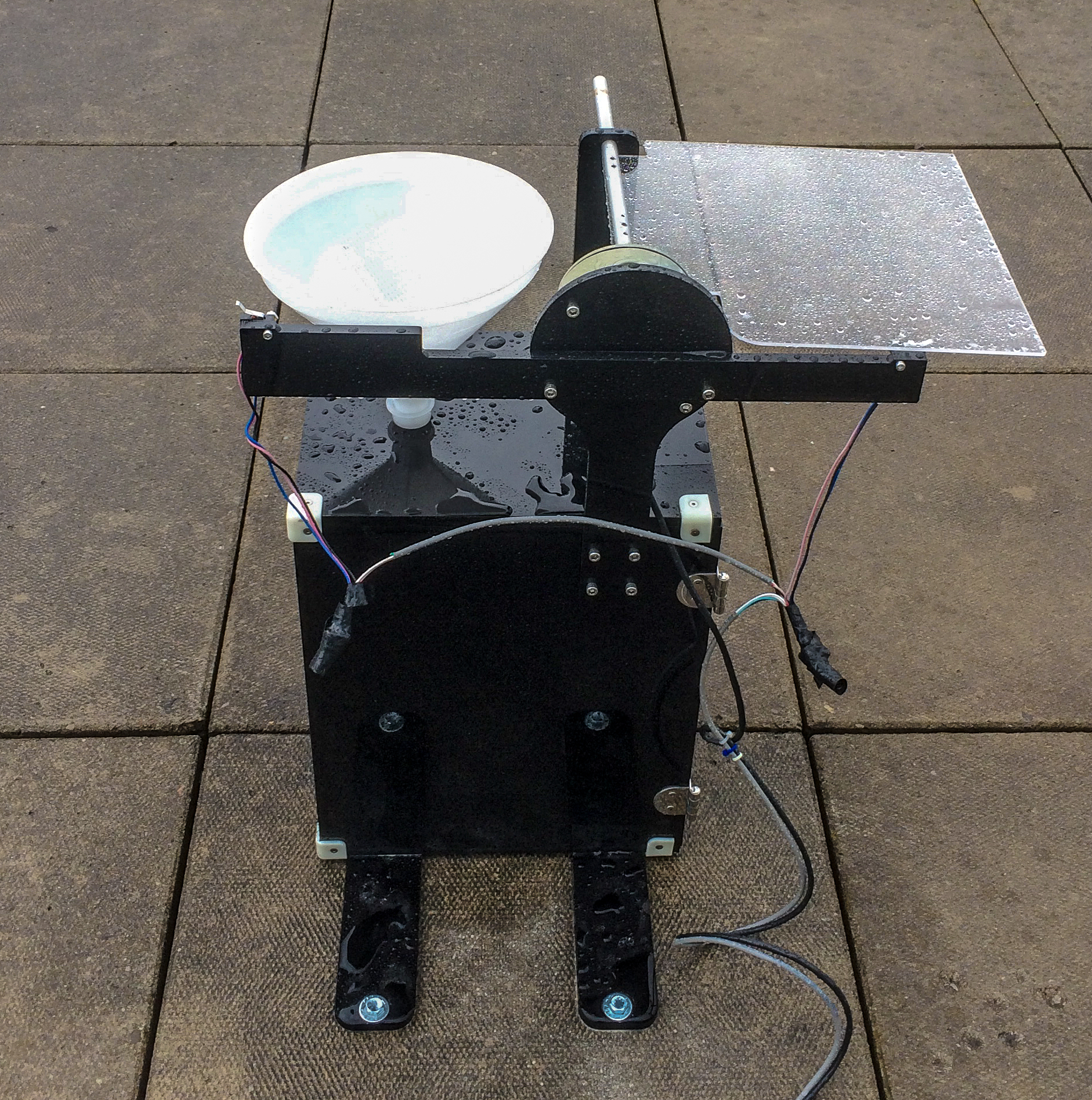A large contingent of undergraduate and graduate students in the Atmospheric Chemistry Laboratory went to the Ministry of the Environment, Conservation, and Parks learn about emergency responses to hazardous atmospheric pollution (e.g. fires, derailments) and the measurements that help us understand when health outcomes are linked to atmospheric chemistry through the Air Quality Health Index. Special thanks to our host scientists Nick Karellas, Rob Healy, and John Wang!
Let it rain a little while longer!
In collaboration with @SVOCora and @daniel_persaud, a new generation of off-grid precipitation units are collecting samples from the Air Quality Research Laboratory here @YorkUScience! Let’s hope the snow holds off a little while longer!
Indoor Chemistry Field Experiments!
It’s been nine days of intense data collection from indoor chemistry field experiments in Syracuse, NY and Boulder, CO. While they will continue, we will be returning home to start working up the data from our targeted experiments (or gather ongoing data remotely). We’ve learned a lot and can’t wait for the next time!
Pollutant Transport, Emissions, and Radical Oxidation Detectives in the Atmospheric Chemistry Laboratory (PTERODACL)
All of the new PTERODACL group members have arrived in the Atmospheric Chemistry Laboratory, housed in the Petrie Science and Engineering Building @yorkuniversity @YorkUScience @YUResearch, for the 2018-19 academic year! We settled in with a group lunch of roti and doubles. Welcome to you all!
Indoor Chem Fall Research Team @TVandenBoer @caputolabyork @SVOCora
Our research team has two new student members Leyla and Melodie as we kick start our work this fall on developing new analytical platforms for measuring reactive nitrogen in indoor environments. Looking forward to the arrival of the first new analytical system! Learn more here: https://www.tcvandenboer.ca/indoor-chem-projectsjoin-the-group/
Celebrating a successful summer in research and some birthdays too!
The Atmospheric Chemistry Laboratory hosted undergraduate researchers Leyla Salehpoor and Hossein Ghezelbash this summer for their thesis research projects in the BSc.(Hons) program in Chemistry at YorkU. These motivated undergraduates built their own instruments, collected atmospheric samples, and developed some very challenging analytical methods, which they presented and defended with vigour and enthusiasm! Congratulations to you both! Celebration of this completed research journey and birthdays for Teles and Hossein was held over sushi.
Congratulations on the Atmospheric Environment Manuscript Bryan and Leyla!
Bryan Place completed his MSc in the VDB Group in 2017 and his second publication has just been accepted in Atmospheric Environment. YorkU chemistry Honours student, Leyla Salehpoor completed critical experiments to contribute to this work over the summer. Congratulations on your acheivement Leyla and Bryan!
Bryan also surprised us at YorkU with an impromptu visit when his paper was accepted to check out the Atmospheric Chemistry Laboratory. A memorable visit!
New Analytical Instrumentation Employment Opportunities in the VandenBoer Group!
Analytical Method and Instrument Development for the Quantitation of Reactive Nitrogen in the Indoor Environment
The VandenBoer Group is currently searching for several graduate students interested in the development of new analytical methodologies and instrumentation for quantifying reactive nitrogen towards understanding the chemistry of the indoor environment. There are three major questions being pursued with funding provided by the Alfred P Sloan Foundation Chemistry of the Indoor Environment program:
- Can ammonia and amines be collected quantitatively indoors by passive sampling?
- Can a selective passive sampling method for nitrous acid (HONO) be developed?
- Can the total reactive nitrogen (Nr) in indoor environments be quantified and fractionated?
The ideal candidate will have a strong background in Analytical Chemistry and Instrumental Analysis, preferably with some course-based exposure to Synthetic, Atmospheric, and Environmental Chemistry. Additional assets of interested applicants include experience in Experimental Physics, Electrical or Software Engineering, or Mathematics. Contact Dr. VandenBoer at tvandenb@yorku.ca with your CV, academic transcripts, and contact information for two to three (2-3) professional references.
2017 York University 26th Annual Schiff Lecture: Prof. Jon Abbatt (UofT)
The annual Harold I Schiff Lecture is held by the Centre for Atmospheric Chemistry at York University. This year's speaker was Professor Jon Abbatt from the University of Toronto, who highlighted the impact of Schiff's writing with Lydia Dotto in 'The Ozone War' as an historic work making atmospheric chemistry accessible to the public. Professor Abbatt highlighted a wide variety of findings from work funded by NSERC from the internationally collaborative NETCARE project exploring the nature of atmospheric aerosol in the Canadian Arctic.
Welcome to York Adam!!
Adam Selig has joined the VandenBoer Group at York University this fall to pursue an MSc degree in Chemistry. Welcome Adam!

























